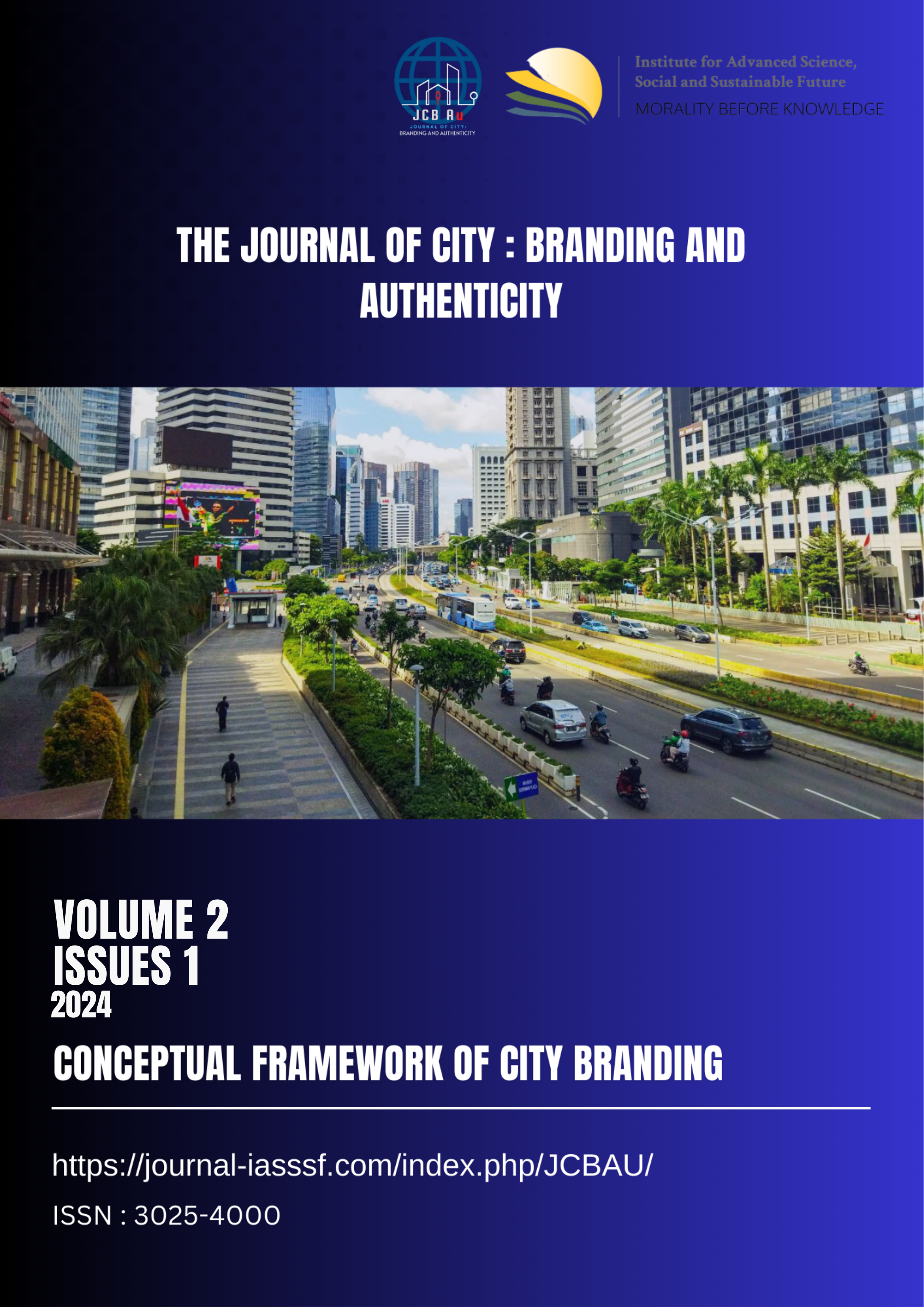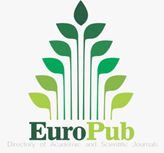Heritage and identity: The vernacular transformation of De Tjolomadoe
DOI:
https://doi.org/10.61511/jcbau.v2i1.2024.913Keywords:
industrial sites, adaptive reuse, heritage, De TjolomadoeAbstract
Background: This research paper focuses on the adaptive reuse of the De Tjolomadoe (Colomadu) heritage sugar factory within the field of vernacular architecture. Methods: Utilizing qualitative research methods such as in-depth interviews, site observations, and archival analysis, it examines the preservation of industrial heritage through its integration into vernacular architectural practices, yielding insights for sustainable development. Findings: The De Tjolomadoe factory, a prominent Indonesian historical and cultural landmark, serves as a compelling case study in adaptive reuse, offering significant findings. Firstly, it illustrates how adaptive reuse effectively preserves cultural identity by seamlessly blending vernacular design elements and traditional building techniques, thereby maintaining a strong connection to its historical and cultural heritage. Secondly, the De Tjolomadoe case exemplifies adaptive reuse as a sustainable development strategy. By utilizing local resources and adhering to vernacular construction methods, the project minimizes environmental impact while generating economic and social benefits for the community. Community engagement emerges as a crucial factor in the success of adaptive reuse projects, as actively involving local communities ensures the authenticity and relevance of such initiatives. Moreover, the transformation of the De Tjolomadoe factory into a cultural destination underscores its substantial economic impact on the region. Similar adaptive reuse projects have the potential to boost tourism, stimulate local economies, and preserve cultural heritage. Conclusion: The lessons drawn from the De Tjolomadoe case offer practical insights and principles guiding future adaptive reuse endeavours, emphasizing cultural preservation, sustainability, community participation, and economic viability. Novelty/Originality of this article: These findings contribute to the growing knowledge base on the adaptive reuse of industrial heritage sites within the context of vernacular architecture, inspiring and informing initiatives aimed at revitalizing our industrial heritage for future generations.
References
Aktürk, G. & Fluck, H. (2022). Vernacular Heritage as a Response to Climate: Lessons for future climate resilience from Rize, Turkey. Land, 11(2), 276. https://doi.org/10.3390/land11020276
Aratuza, K. S. (2021). Kajian Heterotopia pada Pabrik Gula Colomadu. Syntax Literate Jurnal Ilmiah Indonesia, 6(12), 6197—6213. https://doi.org/10.36418/syntax-literate.v6i12.5047
Ardhiati, Y., Ashri, P. D., Prasetya, L. E., & Kurniawan, F. (2020). Imaginary vs. Traditional Museum: The Historical Heritage-Based Design. Proceedings of the International Conference of Heritage & Culture in Integrated Rural-Urban Context (HUNIAN 2019). https://doi.org/10.2991/aer.k.200729.001
Baqir, A. A. M. E. & Syamsiyah, N. R. (2021). Identifikasi Green Area Pada Kawasan De Tjolomadoe Karanganyar Melalui Penilaian Greenship Neighborhood Versi 1.0. Arsir: Jurnal Arsitektur, 13—23. https://doi.org/10.32502/arsir.v0i0.3645
Bottero, M. C., D’Alpaos, C., & Oppio, A. (2019). Ranking of Adaptive Reuse Strategies for Abandoned Industrial Heritage in Vulnerable Contexts: A Multiple Criteria Decision Aiding Approach. Sustainability, 11(3), 785. https://doi.org/10.3390/su11030785
Brunner, T. (2009). Le passage aux langues vernaculaires dans les actes de la pratique en Occident. Le Moyen Age, Tome CXV(1), 29—72. https://www.cairn.info/revue-le-moyen-age-2009-1-page-29.htm
Cao, H., Tamás, A. M., Sztranyák, G., & Zhang, E. (2022). Regeneration and Sustainable Development of Vernacular Architecture. Pollack Periodica, 17(2), 151—156. https://doi.org/10.1556/606.2022.00530
Cheibub, B. L. & Melo, V. A. D. (2010). Experiencia turística, ocio/recreación y mediación Un estudio del proyecto ‘Turismo Jovem Cidadão’ en Río de Janeiro, Brasil. Estudios y perspectivas en turismo, 19(6), 1037—1052. http://www.scielo.org.ar/pdf/eypt/v19n6/v19n6a09.pdf
Choe, S.-J., & Han, S.-H. (2021). Applicability of Assessment Indices for Hanok-User Sensory Comfort Based on Visual and Tactile Comfort Evaluation Indicators. Sustainability 13(20), 11511. https://doi.org/10.3390/su132011511
Copeland, R. (1987). Rhetoric and Vernacular Translation in the Middle Ages. Studies in the Age of Chaucer, 9(1), 41—75. https://muse.jhu.edu/article/658796
de Aldana, J. J. (2000). Del aventurero trotamundos al héroe nacional venezolano? Estudios de Asia y África, XXXV(1), 101—130. https://doi.org/10.24201/eaa.v35i1.1666
Elsayed, M. S., Ashour, M. A. A., & Hegazi, Y. S. (2022). Thinking Directions of Added Masses to Historic Buildings at the Twentieth Century Architecture. Civil Engineering and Architecture, 10(5), 1745—17771. https://doi.org/10.13189/cea.2022.100505
Fajarwati, A. & Ardhiati, Y. (2021). Identitas dan Material Culture Kelas Pekerja pada Situs De Tjolomadoe. JSRW (Jurnal Senirupa Warna), 9(1), 49—62. https://doi.org/10.36806/jsrw.v9i1.95
Fajarwati, A. & Kurnia, L. (2021). Transculturality Through Industrial Space: Cembengan at the Colomadu Sugar Factory. Humaniora, 12(1), 45—51. https://doi.org/10.21512/humaniora.v12i1.6918
Fajarwati, A. & Wulandari, A. A. A. (2020). Adaptive Reuse of Colomadu Sugar Factory: Between Preserving Heritage and Social Media Setting. Iop Conference Series Earth and Environmental Science. https://doi.org/10.1088/1755-1315/452/1/012045
Fernández, M. B. (2023). Linguistic Variation, Social Meaning and Covert Prestige in a Northern Moroccan Arabic Variety. Languages, 8(1), 89. https://doi.org/10.3390/languages8010089
Galloway, J. H. (1977). The Mediterranean Sugar Industry. Geographical Review, 67(2), 177—194. https://doi.org/10.2307/214019
Gavilán, M. D. M. (1990). La concepción del modo verbal en la gramática española del siglo XVII. Estudios Humanísticos. Filología, 12, 197—214. https://doi.org/10.18002/ehf.v0i12.4047
Hanifunisa, A. & Swasty, W. (2020). Signage Yang Informatif dan Interaktif pada the Heritage Palace Kota Surakarta Jawa Tengah. Jurnal Bahasa Rupa 3(2), 95—103. https://doi.org/10.31598/bahasarupa.v3i2.452
Hartveld, A. J. (1996). Raising cane: Linkages, organizations and negotiations in Malang’s sugar industry, East Java. Thesis external PhD. Wageningen University & Research.
Hermawan, B. & Sholihah, A. B. (2020). Cultural Heritage as City Identity Case Study of Ngawi, East Java, Indonesia. Iop Conference Series Earth and Environmental Science. https://doi.org/10.1088/1755-1315/447/1/012040
Huron, D. & Veltman, J. (2006). A Cognitive Approach to Medieval Mode: Evidence for an Historical Antecedent to the Major/Minor System. Empirical Musicology Review, 1(1), 33—55.
Irvine, H. (2012). A genealogy of calculations at an early Queensland sugar mill. Accounting History, 17(2), 193—219. https://doi.org/10.1177/1032373211435501
Izzati, H. (2023). Pengaruh Komposisi Foto De Tjolomadoe Melalui Instagram @Detjolomadoe_official. Jaur (Journal of Architecture and Urbanism Research), 7(1), 59—71. https://doi.org/10.31289/jaur.v7i1.10089
Judd, C. C. (2002). Renaissance modal theory: Theoretical, compositional, and editorial perspectives. In T. Christensen (Ed.),The Cambridge History of Western Music Theory (pp. 364—406). Cambridge: Cambridge University Press.
Kuntari, E. & Lasally, A. (2022). Tourists’ Perception of Heritage Tourism Attraction De Tjolomadoe. Proceedings of the International Academic Conference on Tourism (INTACT) "Post Pandemic Tourism: Trends and Future Directions" (INTACT 2022). https://doi.org/10.2991/978-2-494069-73-2_6
Kütükçüoğlu, B. (2023). The Emergence of Mediterranean Discourse in Modern Turkish Architecture and the Special Position of Cengiz Bektaş. A|Z ITU Journal Of The Faculty Of Architecture, 20(2), 317—331. https://doi.org/10.58278/0.2023.6
Lacarra, M. J., & Grupo Clarisel, G. (2021). Del comulgar Talavera, Hernando de. Cat’ Alogo de Obras Medievales Impresas En Castellano, 2021(2021). http://dx.doi.org/10.26754/uz_comedic/comedic_cmdc21
Lara, F. L. (2009). Modernism Made Vernacular: The Brazilian Case. Journal of Architectural Education, 63(1), 41—50. https://doi.org/10.1111/j.1531-314x.2009.01027.x
Lavaf-Pour, Y. & Meraz, F. (2023). MetaPhysics of architecture: An integral theory framework for sustainability. ARENA Journal of Architectural Research, 8(1), 5. https://doi.org/10.55588/ajar.374
Lazzarini, A. H. (2016). Gendered Labour, Migratory Labour: Reforming Sugar Regimes in Xinavane, Mozambique. Journal of Southern African Studies, 43(3), 605—623. http://dx.doi.org/10.1080/03057070.2016.1197695
Lee, D.-H., Ching-Ching, L., Lin, H.-Q., & Min-Fu, H. (2018). Evaluation of the Financial Feasibility of Restoration and Reusing the Sugar Industrial Heritage Site –A Comparison Among BOT, ROT and OT Concession Frameworks. International Journal of Social Science and Humanity 8(6), 192—199. https://doi.org/10.18178/ijssh.2018.v8.959
Manurung, P., Sastrosasmito, S., & Pramitasari, D. (2021). How to Reveal the Meaning of Space in Vernacular Architecture? International Journal of Built Environment and Sustainability, 9(1), 89—97. https://doi.org/10.11113/ijbes.v9.n1.890
Marin-Burgos, V., & Clancy, J. S. (2017). Understanding the expansion of energy crops beyond the global biofuel boom: Evidence from oil palm expansion in Colombia. Energy, Sustainability and Society, 7(1), 21. https://doi.org/10.1186/s13705-017-0123-2
Merino-Aranda, A., Castillejo-González, I. L., Gala, A. V., Montes-Tubío, F. d. P., Mesas-Carrascosa, F. J., & Triviño-Tarradas, P. (2021). Strengthening Efforts to Protect and Safeguard the Industrial Cultural Heritage in Montilla-Moriles (PDO). Characterisation of Historic Wineries. Sustainability, 13(11), 5791. https://doi.org/10.3390/su13115791
Monroy, J. e A., & Bartolome, B. (2020). Bienal Tlatelolca. El Ornitorrinco Tachado. Revista de Artes Visuales, 12.
Motealleh, P., Zolfaghari, M., & Parsaee, M. (2018). Investigating Climate Responsive Solutions in Vernacular Architecture of Bushehr City. HBRC Journal, 14(2) 215—223. https://doi.org/10.1016/j.hbrcj.2016.08.001
Nascimento, R. C. de S. (2018). Do Ocidente ao Oriente: O Itinerário de Benjamin de Tudela. Mosaico, 11(2), 265—266. https://doi.org/10.18224/mos.v11i2.6614
Nikolić, M., Drobnjak, B., & Ćulafić, I. K. (2020). The Possibilities of Preservation, Regeneration and Presentation of Industrial Heritage: The Case of Old Mint “A.D.” on Belgrade Riverfront. Sustainability, 12(13), 5264. https://doi.org/10.3390/su12135264
Nugroho, P. S. (2020). Identifikasi Pabrik Gula Sebagai Industrial Heritage di Jawa. Arsitektura, 18(1), 119—128. https://doi.org/10.20961/arst.v18i1.37936
Nugroho, P. S., Yuliastuti, N., & Rukayah, S. (2021). Cultural Aspects and the Sustainability of the Tasikmadu Sugar Factory as an Industrial Living Heritage in Java. IOP Conference Series: Earth and Environmental Science, 830(1), 012064. https://iopscience.iop.org/article/10.1088/1755-1315/830/1/012064/meta
Oliveira, J. C. L. & Araújo, J. R. (2022). AQUILOMBAR-SE: lideranças quilombolas como articuladores da cosmologia quilombola. Em Sociedade, 4(1), 128—145. https://doi.org/10.5752/P.2595-7716.2022v4n1p128-145
Patricia Ledesma Bouchan & Carlos Javier González González. (2020). De Tlacopan a Otumba. Retrieved from https://arqueologiamexicana.mx/mexico-antiguo/la-batalla-de-otumba
Pitaloka, A. R. & Yusran, Y. A. (2019). Penilaian Keaslian Bangunan De Tjolomadoe Menggunakan Instrumen Nara Grid. Review of Urbanism and Architectural Studies, 17(2), 27—40. https://doi.org/10.21776/ub.ruas.2019.017.02.3
Priyanti, F., Istiqomah, I., & Aryati, I. (2020). Daya Tarik Wisata, Promosi Media Sosial, dan References Group Terhadap Keputusan Berkunjung ke De Tjolomadoe Kabupaten Karanganyar. Jurnal Ilmiah Edunomika, 4(2), 467—473. https://doi.org/10.29040/jie.v4i02.1206
Purnomo, A. D., Laksitarini, N., & Destyantari, L. (2022). DE Tjolomadoe – The Heritage Building With a New Spirit. In Embracing the Future: Creative Industries for Environment and Advanced Society 5.0 in a Post-Pandemic Era (pp. 301—304) https://doi.org/10.1201/9781003263135-61
Qadri, L., Sawab, H., Munir, A., Machdar, I., & Nursaniah, C. (2017). Principles of Vernacular House Design for the Sustainability of Coastal Settlements. In P. A. J. Wahid, P. I. D. A. Aziz Abdul Samad, P. D. S. Sheikh Ahmad, & A. P. D. P. Pujinda (Eds.), Carving The Future Built Environment: Environmental, Economic And Social Resilience, vol 2. European Proceedings of Multidisciplinary Sciences (pp. 767—776). Future Academy. https://doi.org/10.15405/epms.2019.12.78
Ramaraj, A., Selvaraj, C., & Varadan, S. V. (2021). Exploring the Language of Vernacular Architecture in Today’s Context: A Case of ‘Kavunji,’ India. Space and Culture India, 8(4), 120—133. https://doi.org/10.20896/saci.v8i4.1078
Sadhu, V. K. K., & Ramesh, S. (2019). People’s Acceptance of Vernacular Houses—Transformed Dwellings of Ghantasala, Andhra Pradesh. Journal of World Architecture, 4(s1), 9—24. https://doi.org/10.26689/jwa.v4isi1.920
Selvamony, N. (2020). Vernacular as Homoarchic Mode of Existence. South Asian Review, 41(2), 194—196. https://doi.org/10.1080/02759527.2020.1725225
Solikin. (2019). Metode Pengeringan Ampas Tebu (Bagasse) Dengan Pemanfaatan Kembali Panas Gas Buang Boiler Di Pg. Pradjekan Bondowoso. Journal of Research and Technology, 5(1), 1—5. https://doi.org/10.55732/jrt.v5i1.441
Susanti, N., Aryati, I., & Damayanti, R. (2019). Historis, Daya Tarik Wisata dan Electronic Word of Mouth (E-Wom) terhadap Keputusan Berkunjung di De Tjolomadoe. Jurnal Riset Bisnis dan Manajemen, 12(2), 59—63. https://journal.unpas.ac.id/index.php/jrbm/article/view/1424
Triratma, B., Yuliani, S., Soyfan, Y. E., & Basith, A. (2023). Adaptive Reused Heritage Building Based on Sustainable Architecture. Arteks Jurnal Teknik Arsitektur, 8(3), 453—464. https://doi.org/10.30822/arteks.v8i3.2635
Tsvetkova, Yu. (2023). Principles of Investment Attractiveness of Territories of Industrial Heritage of Sugar Factories Middle Xix – Early Xx Centuries. Bulletin of Belgorod State Technological University Named After v G Shukhov, 8(9), 83—92. https://doi.org/10.34031/2071-7318-2023-8-9-83-92
Umaru, N. A., Bello, M. M., & Jolaoso, A. B. (2022). Review of Selected Features of Hausa Vernacular Architecture, Case Study of Dakali and Zaure in Jos, Plateau State, Nigeria. Arteks Jurnal Teknik Arsitektur, 7(3), 421—432. https://doi.org/10.30822/arteks.v7i3.1966
Vakharia, M. N. & Joshi, M. P. (2022). Thermal Characteristics of Vernacular Architecture in Warm Humid Region. Ecology Environment and Conservation, 28(2), 874—878. https://doi.org/10.53550/eec.2022.v28i02.044
van Hattum, M. (2012). Irish English modal verbs from the fourteenth to the twentieth centuries. Thesis. The University of Manchester.
Vellinga, M. (2013). The Noble Vernacular. The Journal of Architecture, 18(4), 570—590. https://doi.org/10.1080/13602365.2013.819813
Wang, S.-H. & Kurose, T. (2013). Study on the Conservation of Sugar Industrial Heritage Along Sugar Railway and Public Space Improvement. Journal of the City Planning Institute of Japan, 48(3), 393—398. https://doi.org/10.11361/journalcpij.48.393
Woodward, R. (2006). Medieval legacies: The industrial archaeology of an early sixteenth century sugar mill at Sevilla la Nueva, Jamaica.
Downloads
Published
How to Cite
Issue
Section
Citation Check
License
Copyright (c) 2024 Journal of City: Branding and Authenticity

This work is licensed under a Creative Commons Attribution 4.0 International License.
















